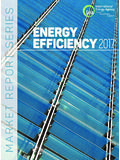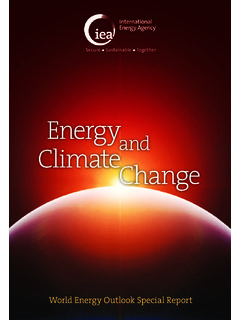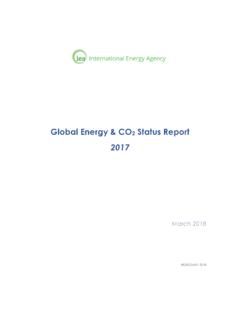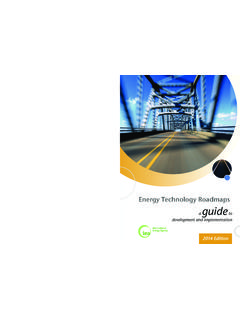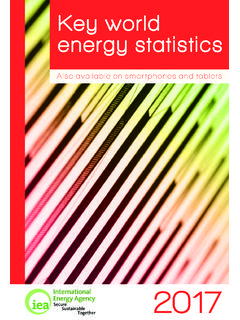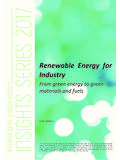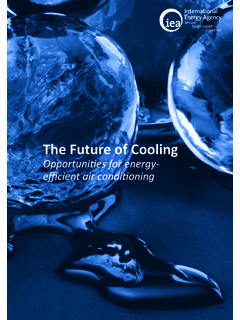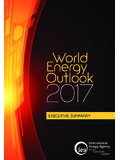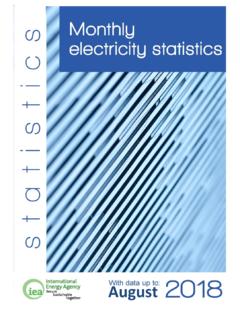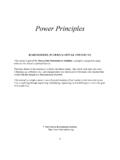Transcription of Energy and Climate Change - World Energy …
1 EnergyClimateandChange World Energy Outlook Special ReportEnergyClimateandChange Secure SustainableTogetherWorld Energy Outlook Special 326-05-2015 17:31:40 INTERNATIONAL Energy AGENCYThe International Energy Agency (IEA), an autonomous agency, was established in November 1974. Its primary mandate was and is two- fold : to promote Energy security amongst its member countries through collective response to physical disruptions in oil supply, and provide authoritative research and analysis on ways to ensure reliable, affordable and clean Energy for its 29 member countries and beyond.
2 The IEA carries out a comprehensive programme of Energy co-operation among its member countries, each of which is obliged to hold oil stocks equivalent to 90 days of its net imports. The Agency s aims include the following objectives: n Secure member countries access to reliable and ample supplies of all forms of Energy ; in particular, through maintaining effective emergency response capabilities in case of oil supply disruptions. n Promote sustainable Energy policies that spur economic growth and environmental protection in a global context particularly in terms of reducing greenhouse-gas emissions that contribute to Climate Change .
3 N Improve transparency of international markets through collection and analysis of Energy data. n Support global collaboration on Energy technology to secure future Energy supplies and mitigate their environmental impact, including through improved Energy efficiency and development and deployment of low-carbon Find solutions to global Energy challenges through engagement and dialogue with non-member countries, industry, international organisations and other member countries: Australia Austria Belgium CanadaCzech RepublicDenmarkEstoniaFinlandFranceGerma nyGreeceHungaryIreland ItalyJapanKoreaLuxembourgNetherlandsNew Zealand NorwayPolandPortugalSlovak RepublicSpainSwedenSwitzerlandTurkeyUnit ed KingdomUnited StatesThe European Commission also participates in the work of the IEA.
4 OECD/IEA, 2015 International Energy Agency 9 rue de la F d ration 75739 Paris Cedex 15, note that this publication is subject to specific restrictions that limit its use and distribution. The terms and conditions are available online at 120-01-2015 17:19:22 Foreword3 ForewordWe face a moment of opportunity, but also of great risk. The World is counting on the UN Climate talks in Paris later this year to achieve a global agreement that puts us on a more sustainable path. As IEA analysis has repeatedly shown that the cost and difficulty of mitigating greenhouse-gas emissions increases every year, time is of the essence.
5 And it is clear that the Energy sector must play a critical role if efforts to reduce emissions are to succeed. While we see growing consensus among countries that it is time to act, we must ensure that the steps taken are adequate and that the commitments made are recent years, progress has been made in developing cleaner, more efficient Energy technologies. Indeed, we are seeing signs that economic growth and Energy -related emissions which have historically moved in the same direction are starting to decouple.
6 The Energy intensity of the global economy continued to decline in 2014 despite economic growth of over 3%. But increased effort is still needed if we are to keep open the possibility of limiting the rise in global mean temperature to 2 C. The pledges or Intended Nationally Determined Contributions (INDCs) made by individual countries for the 21st UN Conference of the Parties (COP21) in December 2015 will determine whether this goal will remain special report, part of the World Energy Outlook series, assesses the effect of recent low-carbon Energy developments and the INDCs proposed thus far.
7 It finds that while global Energy -related emissions slow as a result of the Climate pledges, they still increase. To compensate, governments will need to ramp up efforts, reviewing their pledges regularly, setting realistic and attainable longer-term goals and tracking their progress. This report also proposes the adoption of five measures that would achieve a near-term peak in global Energy -related emissions while maintaining momentum for stronger national efforts. The next few months could be decisive in determining our Energy and Climate future.
8 Will countries take on and abide by commitments that will make a meaningful impact? Will they agree to additional measures to spur further innovation and action? Achieving our goals is still possible, but the risk of failure is great: the more time passes without a deal, the more high-carbon Energy infrastructure is locked presents an opportunity we cannot afford to publication is issued on my authority as Executive Director of the van der Hoeven Executive Director International Energy AgencyAcknowledgements5 AcknowledgementsThis report was led by the Directorate of Global Energy Economics (GEE) of the International Energy Agency (IEA).
9 It was designed and directed by Fatih Birol, Chief Economist of the IEA. The analysis was co-ordinated by Laura Cozzi, Dan Dorner and Timur G l. Principal contributors to the report were Brent Wanner, Fabian K sicki and Christina Hood ( Climate Change Unit), together with Marco Baroni, Simon Bennett (CCS Technology Unit), Christian Besson, St phanie Bouckaert, Amos Bromhead, Olivier Durand-Lasserve (IEA/OECD), Tarik El-Laboudy, Tim Gould, Mark Hashimoto (Emergency Policy Division), Markus Klingbeil, Atsuhito Kurozumi, Ellina Levina ( Climate Change Unit), Junling Liu, Sean McCoy (CCS Technology Unit)
10 , Pawe Olejarnik, Nora Selmet, Daniele Sinopoli, Shigeru Suehiro, Johannes Tr by, Charlotte Vailles, David Wilkinson, Georgios Zazias and Shuwei Zhang. Sandra Mooney and Teresa Coon provided essential Priddle carried editorial from the OECD also contributed to the report, particularly Jean Chateau. The report benefited from valuable inputs, comments and feedback from other experts within the IEA, including Didier Houssin, Keisuke Sadamori, Liwayway Adkins, Philippe Benoit, Pierpaolo Cazzola, Paolo Frankl, Rebecca Gaghen, Jean-Fran ois Gagn , Takashi Hattori, Juho Lipponen, Duncan Millard, Misako Takahashi, Samuel Thomas, Laszlo Varro and Martin Young.
